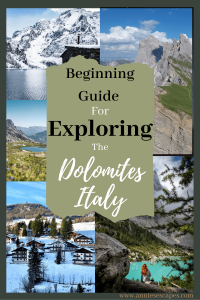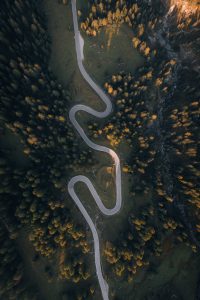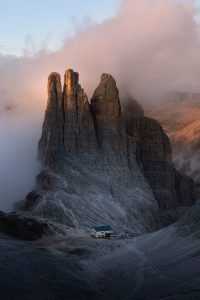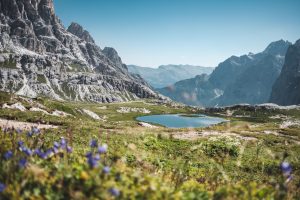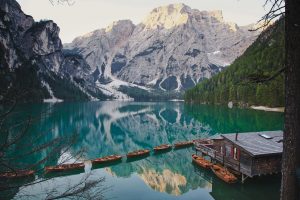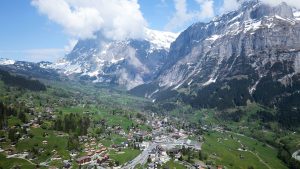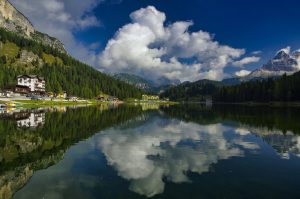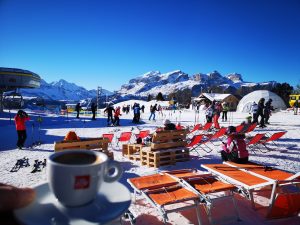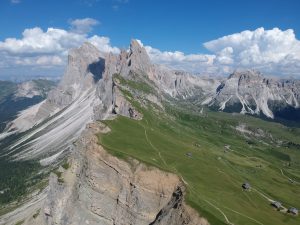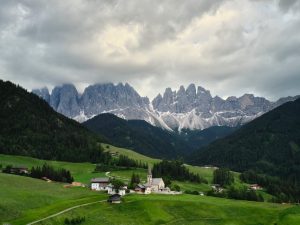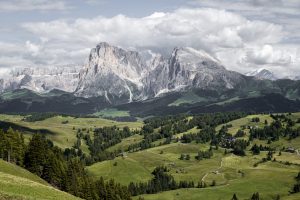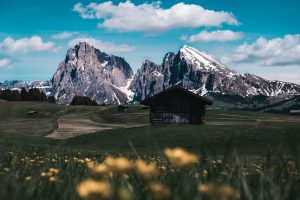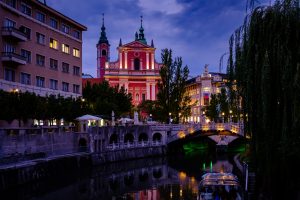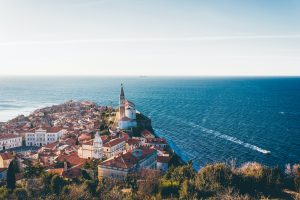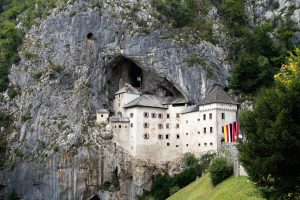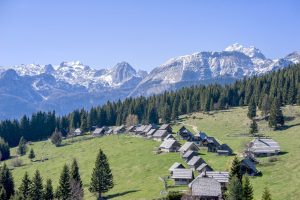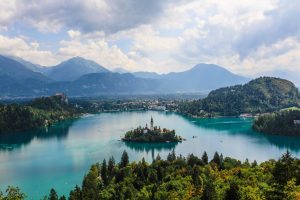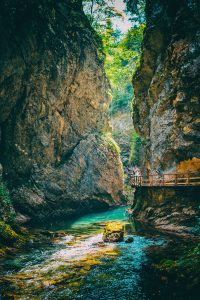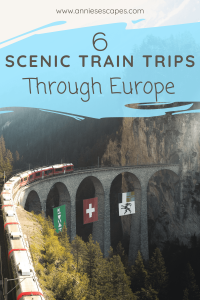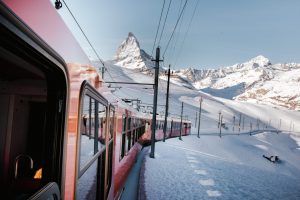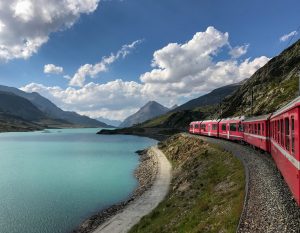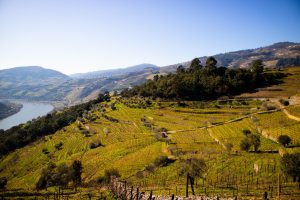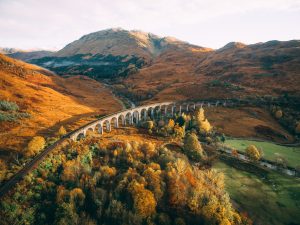When you’re starting to plan your next getaway the question inevitably arises: should we take a city break or beach vacation? People tend to have strong opinions one way or the other, and it can seem difficult to come up with a compromise. Especially when traveling to Europe.
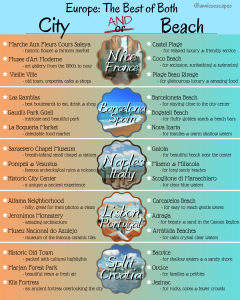
Fortunately, you don’t have to choose! There are plenty of beautiful, historic cities in Europe that also have relaxing, sun-soaked beaches. You can spend your European vacation exploring museums and wandering the cobblestone streets one day, and splashing in the stunning sea the next. We’ve created a quick guide to our top city/beach destinations with just a taste of what each has to offer. Read on below for even more detailed descriptions of what you’ll discover in these amazing places.

Vielle Ville -Nice’s old town features rustic narrow streets, colorful markets, and a vibrant atmosphere. You can enjoy beautiful architecture like the Cathédrale Sainte-Réparate or the 17th-century mansion Palais Lascaris. The old town includes the most popular dining destinations, charming buildings, markets, and monuments. It’s worth spending the day soaking up the history and atmosphere.
Musee d’Art Moderne et d’Art Contemporain (MAMAC)– This modern art museum has over 1300 pieces of art on display. The collection includes avant-garde works from the late 50s to the present day. And you can always head to the rooftop terrace for beautiful panoramic views of the city.

Marche Aux Fleurs Cours Saleya – Pretty striped awnings, hundreds of multicolored, intense, vivid bouquets, and exotic plants. This vibrant market has been in existence for over 120 years and is a must-see when in Nice. While the market is mainly flowers you can also find fruits, veggies, and stalls selling local delicacies. We recommend going early, bringing small bills, and enjoying this colorful, aromatic experience.
[Photo Credit: Kylie Paz via Unsplash]

Castel Plage -The best views of the Bay of Angels with a chic and sophisticated atmosphere. There are several luxury hotels, bars, restaurants, and historic sites nearby. This smaller beach provides private decking down to the water’s edge, pebbles, and calm waters for the perfect break from the city.
Plage Beau Rivage– A longtime hotspot, this private beach is right at the foot of the old town. It’s the largest beach in the French Riviera and is packed with 5-star amenities. Dine in gourmet restaurants on the shore, sip on a cocktail from the luxe lounge bar or rent a classic blue striped sunbed. Head to the Beau Rivage for an iconic, glamorous French Riviera experience.
Coco Beach – Locals love this small public rocky outcrop. Here you won’t find rentals or beach clubs but just the chance to soak up the sun on the warm rocks and dive into the water. Located in a residential area about 5 minutes from the other beaches, this is the perfect spot if you want a quick dip.
[Photo Credit: Alex D’Alessio via Unsplash]

Las Ramblas– This famous promenade stretches 1.2km from the oldest port in the city to the new shopping center. Las Ramblas is full of shops, outdoor cafes, markets, theatre, and art. It is a completely pedestrian zone allowing you to take your time and soak in the atmosphere.
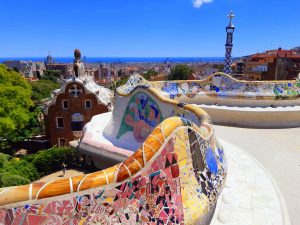
Gaudi’s Park Güell -This UNESCO World Heritage Site sits on a hill above the city. It offers stunning panoramic views, intriguing ceramics, Roman temples, and a forest of enchantment, all designed by the famous Catalan artist Antoni Gaudí in his signature style. Surrounding Gaudi’s beautiful work is a maze of carefully landscaped trails, soft green hills, intricate walls, and bridges, making this one of Barcelona’s most impressive parks.
La Boqueria Market– The best and most famous food market near Las Ramblas. Originally dating back to a 1217 meat market, La Boqueria now serves a huge variety of meat, fish, fruit, veggies, spices, and local dishes. This is a foodie’s paradise from seafood tapas to fruit smoothies. When visiting Barcelona it’s a must to spend time soaking up the atmosphere and the explosion of colors.
[Photo Credit: Denise Jones via Unsplash]
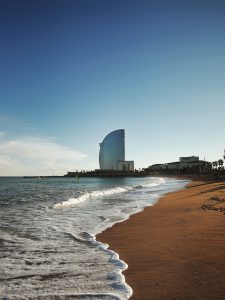
Barceloneta Beach – The oldest and best-loved beach, Barceloneta is linked with the fishing quarter of the same name. The most famous Barcelona beach and the one closest to the city. Its soft golden sands will get crowded in the peak summer season so arrive early to enjoy the classic neighborhood-by-the-sea atmosphere and many amenities.
Bogatell Beach – Classic Barcelona golden sands, a huge variety of recreational facilities, and easy mobility access — this beach has it all. There are smaller crowds here, and they tend to be a little older averaging around 35-38 years. Beautiful water, seafood, and sun lounger rentals make this the perfect place to spend a sun-soaked day.
Nova Icaria– A wide stretch of golden sand on this peaceful beach makes it perfect for families and big groups. Nova Icaria, right next to Bogatell, has the widest range of leisure amenities, including restaurants, bars, playgrounds, ping-pong, and beach volleyball. This was a beach made with large families in mind.
[Photo Credit: Alessio Rinella via Unsplash]

Pompeii & Vesuvius -An easy day-trip from Naples this famous archeological wonder is a must-see. You can book a tour with transportation included, or get a guided tour when you arrive. After marveling at the living museum of Pompeii, head up to Mt Vesuvius itself. The hike to the top is suitable for all ages with many rest areas along the way to admire the panoramic city views.

Historic City Center– This UNESCO World Heritage Site has existed through twenty-seven centuries of history! The largest historic center in Europe, you can admire the many museums, monasteries, catacombs, and over 200 churches. It’s impossible to see it all so we highly recommend taking a local tour to help you appreciate the highlights.
Sansevero Chapel Museum– Mystery and beauty blend to create one of the most enigmatic chapels in Europe. Sansevero Chapel is located in the historic city center and holds some of the greatest marble sculptures in the world. We recommend reading up on the history of the artists and the chapel before visiting.
[Photo Credit:David Mark via Pixabay]
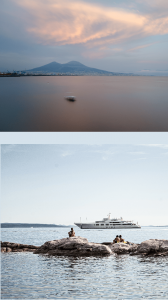
Gaiola Beach – This almost hidden beach is in the Posilipo district. The beach is divided into two sections — the public area, which is a local favorite swimming spot, and the marine protected area in Parco Sommerso Della Gaiola, with its untouched beauty and beautiful views. The blue-green water is perfect for swimming, kayaking, snorkeling, or scuba. Or just settle in on the rocks or small sandy strips to soak in the sun.
Miseno & Miliscola – Located in the Bacoli area at the extreme point of the Capo Miseno peninsula, these two beaches feature a long seaboard with several lidos, bars, cafes, restaurants, and facilities. This is the perfect spot for a picnic with friends or family, with soft sand, clear shallow waters, and a long coast.
Scoglione di Marachiaro – Marechiaro is a seaside town famous for its beauty. This beach can only be reached by boat from the Calata Ponticello, creating a unique experience. Crystal clear water is perfect for a swim, or you can lay your towel on the long rocks or rent a sunbed. This is the perfect beach for classic Italian charm and taking a dip in the Med.
[Photo Credit Top: Jan Gottweiss, Bottom: Ferran Feixas via Unsplash ]

Alfama Neighborhood– The oldest, most traditional, and charming neighborhood in Lisbon. There’s plenty to see as you wander the steep cobblestone lanes. Visit the Castelo de Sao Jorge, hop on the iconic tram, or head to Miradouro de Santa Luzia for breath-taking views on a romantic terrace. Enjoy the cafes, music, and festivals and soak up the atmosphere in this vibrant, lively neighborhood.
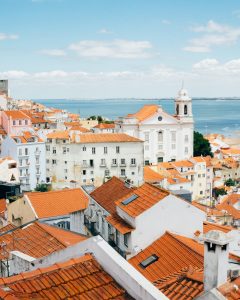
Jerónimos Monastery – This UNESCO World Heritage Site was built in the 1500s and is a must-see site for history and culture. The church features tree-trunk size columns and exhibits a mastery of architecture. Mixing naturalistic elements and religious symbols in its magnificent cloisters and gardens it’s one of the most interesting monuments in Lisbon.
Museu Nacional do Azulejo– A one-of-a-kind museum all about the famous Portuguese azulejos, or tiles. Housed in an old convent from 1509, the collection features pieces as far back as the 1400s. Exhibiting masterpieces of tile art, the azulejos tell a story, and the museum takes you through their history. This unique collection will let you see Lisbon with new appreciation.
[Photo Credit: Tom Byrom via Unsplash]
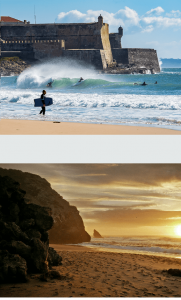
Carcavelos Beach – Located halfway between Lisbon and Cascais, this wide beach is one of the largest on the Lisbon coast. Strong waves make it perfect for surfing or bodyboarding, but there’s plenty to do here besides hitting the waves — including a scenic promenade for skaters and joggers, restaurants and bars with seating on the beach and parasols to rent. This is a lively beach, big and convenient to get to, only a 20 min train ride from the city center.
Adraga – Less than 45min from Lisbon, this beautiful beach features a rock arch, strong waves and is a favorite among locals. Perfect for walking, fishing, and families who want to play in the warm sand. Explore the beach caves or just admire the dramatic coastline from the restaurant terrace.
Arrabida Beaches – The coastline to the south of Lisbon is full of beautiful beaches. A 30 minute train ride from the city center, this area is a natural paradise and protected park. With calm crystal-clear waters, laid-back restaurants, and even some Roman ruins, stretches of golden sand, lush green hills, and vibrant colors make these beaches the perfect getaway.
[Photo Credit Top: Zachary Pearson, Bottom: Natalia Alves via Unsplash]

Marjan Forest Park – One of the most beautiful places to visit in Split. This park offers nature, peacefulness, and mystery. Formerly the residence of monks, it has been transformed into a top place for recreation. Perfect for cycling, hiking, walking, and enjoying the stunning views with a coffee from the cafe.
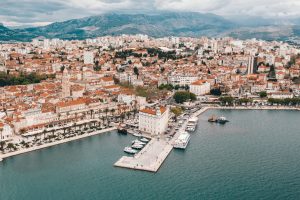
Historic Old Town – There’s a lot to see in Split’s historic old town, and much of it is well-marked with signs in English! Wander the pedestrian-only medieval historic streets, enjoy the cafes, bars, restaurants, and shops. Soak in the history all around you as you navigate the maze of cobblestone alleyways. Be sure to visit the Diocletian’s Palace, the 13th century Bell Tower and the statue of Nin!
Klis Fortress– This ancient stronghold is just outside of Split. You can admire ancient ruins and the 2000-year-old history that seeps from the stones. Sprawling over the hilltop, this fortress is full of lookouts and nooks and you can explore it all with complete freedom.
[Photo Credit:Spencer Davis via Unsplash]
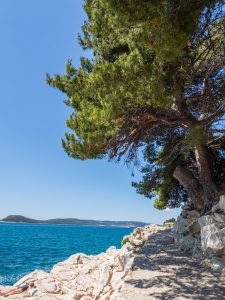
Bačvice – This sandy beach is only a 10-minute walk from this historic old town. A very popular local beach in the heart of the city, the shallow waters are perfect for little ones. You can rent chairs and umbrellas, play water sports, rent jet skis and swim in the clear calm waters.
Ovčice – Just a 5-minute walk from Bacvice Beach, Ovcice is lined with cafes and restaurants with beautiful ocean views. This small pebble beach features many amenities, especially for children, such as rentals, playgrounds, and trampolines! It’s right next to the city and will give you a typical Croatian beach experience.
Ježinac– To avoid the crowds of the main city beaches head to Jezinac at the base of Marjan Hill. This quieter and more peaceful beach is only 2 miles from the city center. It has an upscale atmosphere with luxury accommodations, dining, and amenities. It’s one of the most scenic pebble beaches, offering plenty of places to relax in the sun in style.
[Photo Credit: Tom Bradley via Unsplash]
These are just a small sample of what these fascinating cities and beautiful beaches have to offer, if your interest is piqued- let us know! We’re excited to help plan an adventure that combines the best of both worlds!
